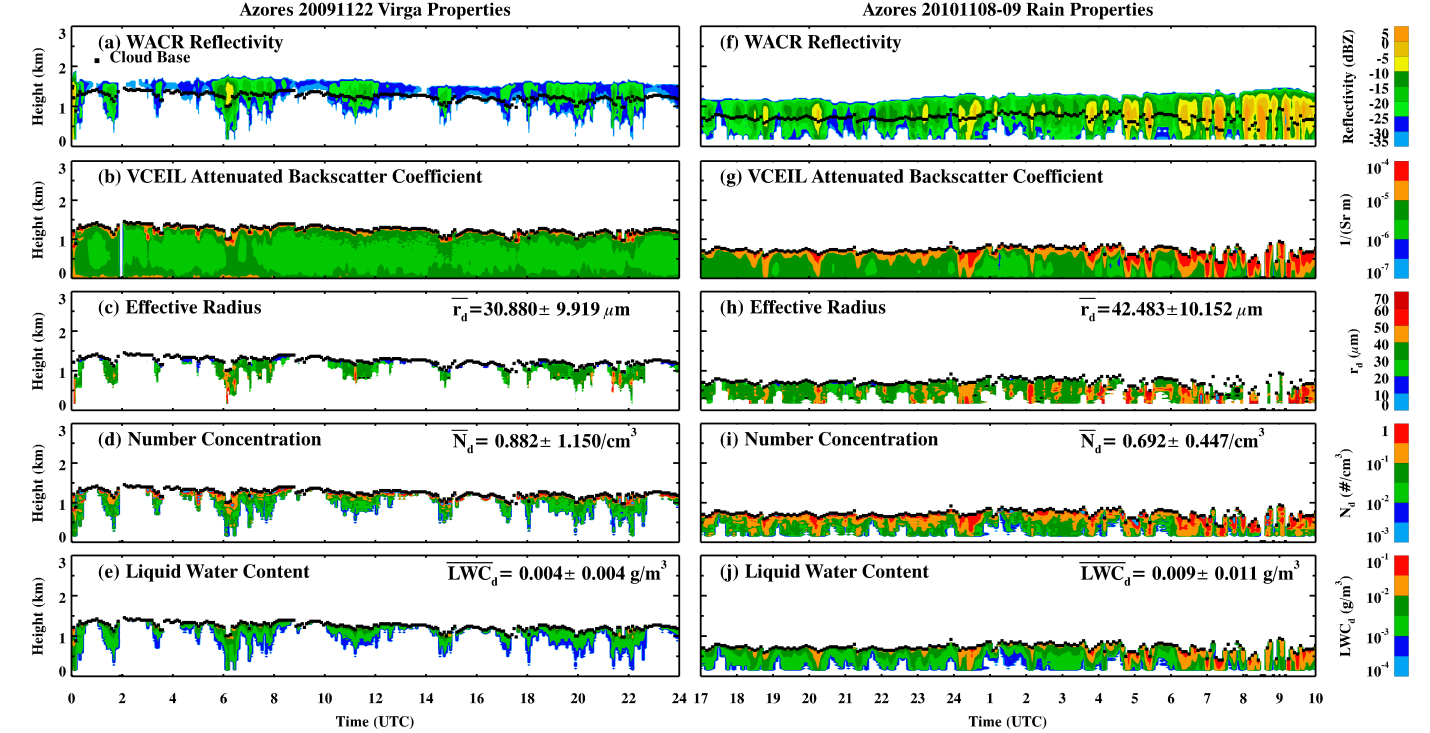MBL drizzle properties and their impact on cloud property retrieval
Submitter:
Dong, Xiquan — University of Arizona
Area of research:
Radiation Processes
Journal Reference:
Science
Marine boundary layer (MBL) clouds frequently produce light precipitation, mostly in the form of drizzle. Radar reflectivity thresholds have been widely used to distinguish between non-precipitating and precipitating clouds; however, none of the thresholds are actually suitable for diagnosing the presence or absence of drizzle in MBL stratocumulus clouds. When drizzle drops fall from the cloud base, they either are evaporated before reaching the surface, which is defined as virga, or they reach the surface in the form of rain.
Impact
Figure 1 demonstrates virga and rain drizzle below the cloud base from two selected cases along with their retrieved microphysical properties. Case I represents a typical virga case that occurred on November 22, 2009, and Case II is a typical rain case that occurred from the late afternoon of November 8 to the morning of November 9, 2010. Figures 1a and 1f present the W-Band ARM Cloud Radar reflectivity profiles and cloud-base heights, and Figures 1b and 1g illustrates the ceilometer attenuated backscatter coefficients for Cases I and II, respectively. Both cases have significant time periods during which radar reflectivities are greater than -37 dBZ below cloud base; however, this occurred more frequently in Case II than in Case I.
Summary
In this study, we retrieved and documented drizzle properties, and investigated the impact of drizzle on cloud property retrievals from ground-based measurements at the ARM Azores facility from June 2009 to December 2010 (Dong et al. 2014a). For the selected cloud and drizzle samples, the drizzle occurrence was 42.6% with a maximum of 55.8% during the winter and a minimum of 35.6% during the summer. The annual means of drizzle liquid water path (LWPd), effective radius (rd), and number concentration (Nd) for the rain (virga) samples are 4.73 (1.25) g m-2, 61.5 (36.4) μm, and 0.38 (0.79) cm-3. The seasonal mean LWPd values are less than 3% of the microwave radiometer-retrieved LWP values. The annual mean differences in cloud-droplet effective radius with and without drizzle are 0.75% and 2.35% for the virga and rain samples, respectively. Therefore, we have concluded that the impact of drizzle below the cloud base on cloud property retrieval is insignificant for a method based on solar transmission, but significant for any retrievals using radar reflectivity.


